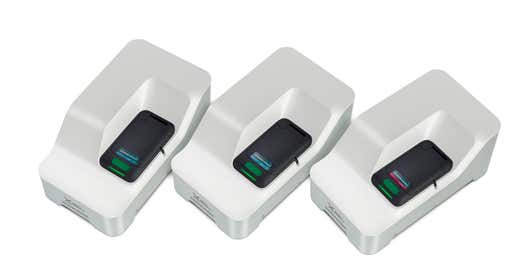Paints and coatings
Analytical tools solutions for manufacturers and researchers working with paints and coatings

Analytical tools solutions for manufacturers and researchers working with paints and coatings

Paints and coatings is a major global industry over $200 billion. 55% of the coatings produced every year are used for the protection of residential and commercial structures and the maintenance of existing structures, and 35% are used to decorate and protect industrial products. The remaining 10% are mainly for high-performance coatings used for aerospace, automotive, marine, and military applications, among others. Without paint and coatings, many products and structures would have a much shorter life span and the built environment and industrial landscape would be rather dull.
The wide range of coating applications brings a diverse range of coating products and formulations, including powder coatings, waterborne coatings, solvent-borne coatings, radiation-curable coatings, and other specialized products. Paints and coatings are complex formulated products that combine several functional components to provide the desired properties and performance. These include polymeric binders or film formers, pigments, extenders, solvents, surfactants, and additives.
Characterization is important across the whole paints and coatings supply chain, whether for developing, manufacturing, and qualifying raw materials for use in a coating formulation, or formulating components together to create a robust product with the correct performance characteristics and quality attributes. Examples include developing novel polymeric binders to enhance surface protection, optimizing the particle size distribution for the application of interest, and ensuring coating dispersions are stable under the appropriate conditions.

Particle size analysis is critical to the performance of any product containing particulate material, whether in a dispersion, suspension, powder, or spray. The primary particle sizing tool is laser diffraction , with the Mastersizer considered the industry standard for a range of applications, with dry and wet dispersion capabilities and a wide dynamic range. It can be used to monitor powder milling processes, check particle size distribution in a final product, or as a formulation tool for developing and researching new products. Malvern Panalytical also offers a laser diffraction product called Spraytec specifically for the analysis of sprays, and an on-line analyzer called Insitec , which can be integrated into a process for real-time particle sizing and automated control. For the accurate analysis of nanoparticle dispersions (< 1 µm), the Zetasizer Advance range may be more appropriate. This uses dynamic light scattering to measure dispersed particles to below 1nm in diameter and can also be used to look at surfactant aggregation and smaller latex particles.
As well as measuring the particle size distribution of dispersion, the Zetasizer Advance range can measure the zeta potential of a dispersion, which can influence product stability. Zeta potential can also be used to probe interactions within a formulation and can also be measured on a surface.
In addition to particle size, Malvern Panalytical provides solutions for particle shape analysis. The Morphologi 4 automated imaging system determines the size and shape of irregular particles by analyzing tens of thousands of particles in the sample and classifying them accordingly. Morphologi 4-ID also combines automated imaging and Raman spectroscopy to provide particle-specific chemical information.
Malvern Panalytical’s primary tool for elemental analysis is X-ray fluorescence (XRF), which is used in the analysis and manufacture of pigments and additives for paints and coatings. It can also be used to determine the concentration of a given element or compound in a coating such as titanium dioxide or lead. XRF solutions include Zetium and Epsilon 4.
Many pigments used in coatings are multi-phase crystalline or semi-crystalline materials, and it can be important when manufacturing such materials that these powders have the correct structure and phase. For example, TiO2 can have different properties depending on the relative amounts of rutile and anatase and their crystallite sizes. X-ray diffraction (XRD) systems such as Aeris and Empyrean can be used to determine key microstructural characteristics such as the phase composition and crystallite size of metals and inorganic materials commonly used in paints. The Empyrean multipurpose diffractometer can also be used to study the structure and residual stresses of thin films, making it ideal for looking at the properties of the coating itself.

